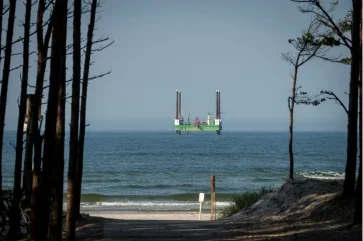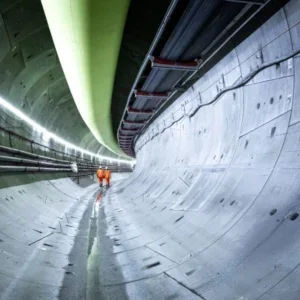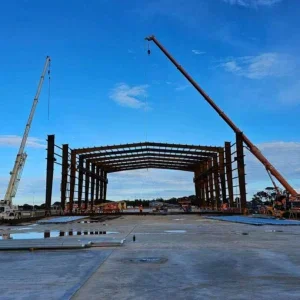
The technology has been used to complete the first of four 1.4km-long tunnels for the Baltic Power project in Lubiatów. The tunnels will house 30cm-diameter transmission cables.
Part of the drilling operation took place offshore, using divers and a jack-up rig to complete the underwater section.
The more than 8,000m3 of spoil extracted from the four drills will be used in beach restoration programmes, helping to repair storm damage sustained over the winter.
Baltic Power board member Jens Poulsen said the drilling was an engineering challenge.
“In Europe, shoreline-crossing drills are typically shorter, and when they are longer, the drill diameter is usually smaller. We are undertaking a significant engineering challenge, drilling nearly 1.5km under dunes, the beach, and the seabed. It’s not possible to drill from just one side, but we are working to ensure minimal environmental disruption,” he said.
Eight kilometres away in Lęborski Osieki, the onshore substation is being built. It will receive power from the wind farm and integrate it into the National Power Grid.
Baltic Power says this is one of the first projects in the world to install 15MW wind turbines and the first to have a significant portion of its turbine towers made of low-carbon steel.
The project is due to be completed in 2026 and will be the first Polish offshore wind farm in the Baltic Sea. It will provide 3% of the country’s energy needs, while reducing CO2 emissions by approximately 2.8 million tonnes per year.







